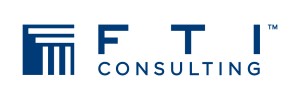4 March 2021
In recent months, the U.S. government has taken a number of actions against China that could significantly impact the global solar supply chain. The situation continues to evolve and the purpose of this article is to highlight these potential issues and likely outcomes, and discuss how impacted companies can manage the risks associated with disruption in the global solar supply chain.
Photovoltaic (PV) solar continues its steep growth trajectory, with U.S. solar forecast to grow approximately 44% year-over-year in 2020 to over 19 GWdc of total installed solar (implying ~8 GWdc came online in 4Q20).1 We anticipate better than expected growth in U.S. solar relative to prior forecasts, underpinned by the new Biden administration, an effective Democratic majority in the Senate, and the solar ITC extension included in the Consolidated Appropriations Act (CAA) passed by Congress in December 2020. Ongoing cost declines and efficiency improvements have lowered barriers to deployment.
Meanwhile, the combination of heightened environmental, social, and governance (ESG) focus from a wide range of actors and stricter carbon emissions reduction policies is driving demand. While the industry has had a long stretch of sustained growth, allegations about forced labor in the Xinjiang region in China have cast a spotlight on how the industry procures polysilicon, a critical raw material for solar PV modules.2
Xinjiang is an autonomous province in the northwest region of China. The region is rich with natural resources and exports commodities and base materials such as cotton, coal, sugar and tomatoes— as well as polysilicon, which is the key raw material in upstream solar products, including ingots, wafers, solar cells and PV modules. It is estimated that roughly 80% of global polysilicon is sourced from China, with approximately 40-50% of that originating in Xinjiang.3
For further information, please contact:
Bill He, Senior Managing Director, FTI Consulting
bill.he@fticonsulting.com
Footnotes:
1: Source: SEIA and Wood Mackenzie, US Solar Market Insight (data through 3Q20, so prior to the tax credit extension in the CAA and other developments).
2: https://www.seia.org/news/solar-companies-unite-prevent-forced-labor-solar-supply-chain
3: Source: S&P; Bernreuter Research





